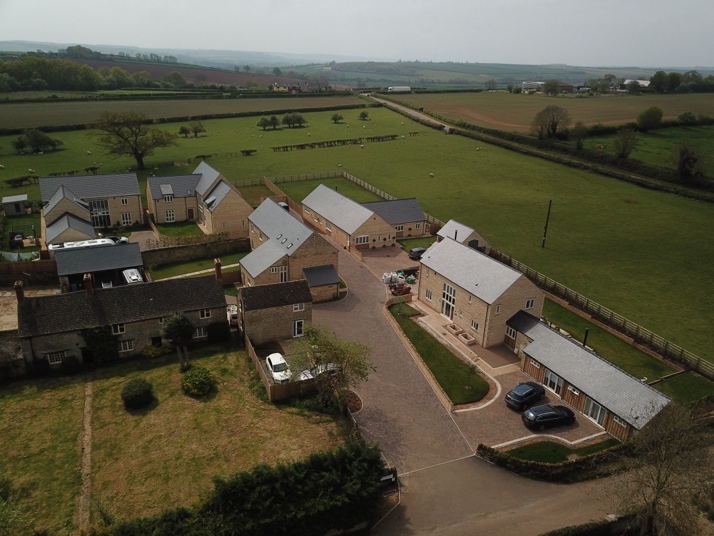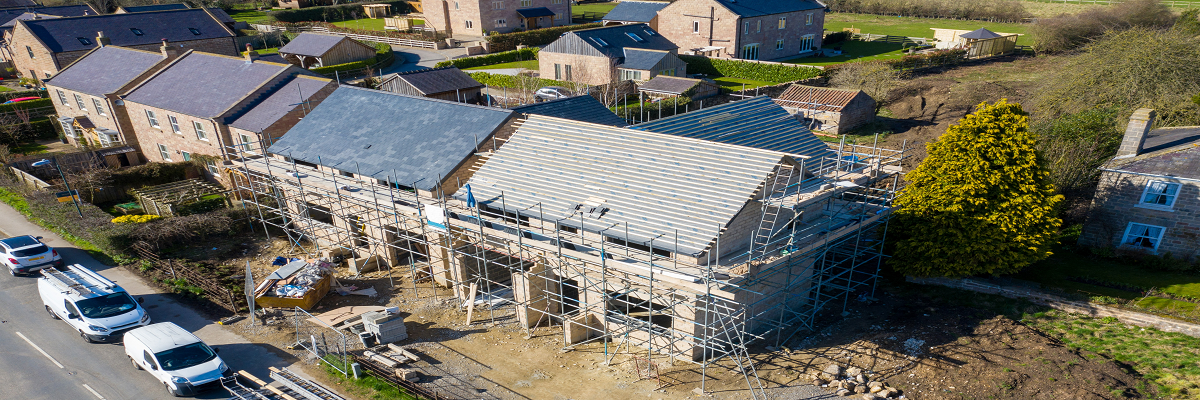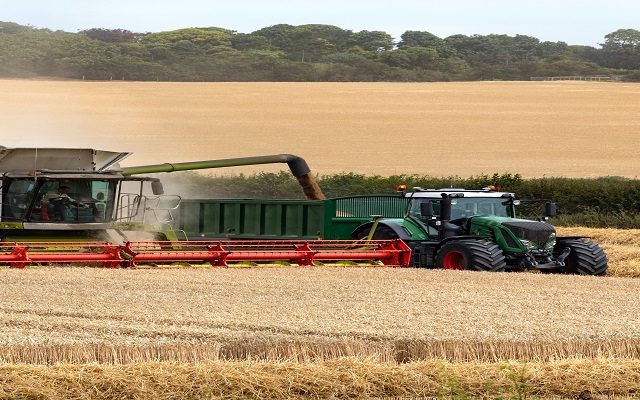In the know: What NPPF changes could mean for the rural sector
The Government has made planning reform the cornerstone of its strategy to stimulate economic growth. But what is changing and what might it mean for the rural sector?
Less than four weeks after coming to power the Government issued a consultation on proposed reforms to the National Planning Policy Framework (NPPF) to ‘get Britain building again’.
Such a speedy turnaround is a clear signal of just how serious the Government is about its manifesto commitment to deliver 1.5 million houses over the next five years. The ambition is to create jobs at the same time as tackling the housing crisis.
‘This is a massive target and something that has not been achieved since the Second World War – a time when local authorities had greater powers to build social housing,’ says Caroline McDade, National Head of Planning for Strutt & Parker.
‘Whether it can be achieved is a case of ‘watch this space’, but the Government is putting a lot of energy into reforming the planning regime which feels positive.’
The NPPF is important as it is effectively the rulebook on planning policy in England
and offers a blueprint of how the Government expects it to be applied at a local level.
One of the most talked-about proposals is a review of the green belt – which currently covers about 13% of England – to identify plots of ugly and disused ‘grey belt’ land suitable for housebuilding.
In the consultation, grey belt is defined as areas of Previously Developed Land (PDL) and/or land that makes a ‘limited contribution’ to the green belt purposes.
The Government has suggested this could include land on the edge of existing settlements or roads, as well as old petrol stations and car parks.
‘It is currently uncertain how far that definition might go,’ says Neil Waterson, Head of Eastern Region Planning. ‘But assuming the proposal goes ahead, this could be helpful for farms and estates near towns and villages looking to release land for housing and other uses.’
Another of the key proposed changes in the NPPF is to restore the requirement for all local planning authorities to demonstrate a five-year housing land supply. It will also become mandatory to calculate housing need based on a revised standard method, the outcome of which has been published with the NPPF consultation and would increase numbers in many authorities.
In some areas Local Plans will need to be reviewed to accommodate these increases. This means there will be pressure to find new sites for future development, which again may be beneficial to some rural landowners.
‘The primary focus of the tweaks to the NPPF is about getting large-scale housing developments moving,’ says Neil. ‘But in doing so, the Government is sending a message to councils that they need to get their house in order quickly. This means identifying land for development and then delivering on it.
‘Within the next three years I think we will see a serious change in the amount of development that is being approved and that must include on rural sites. It’s telling councils that they should be saying yes to things more often than they say no.’
A potential sting in the tail is the proposed requirement for 50% of the homes permitted on green belt land to be affordable, which although laudable, will impact the price that someone is willing to pay for a site.
Caroline warns there is a real risk this could act as a brake on progress. ‘You need a willing landowner to sell, but if they are long-term strategic landholders, they may not need to make a decision today or even in five years’ time. They may choose to hold on until there is change in the guidance and the situation looks more favourable.’
Another point of contention is the suggestion that compulsory purchase compensation rules should be reformed so land bought for ‘public benefit’ could be purchased near to its existing value, not at development or hope value. ‘This would clearly be a negative for some landowners.’
Although some commentators have claimed the planned changes for the NPPF are game-changing, Caroline’s view is that they are just one part of the jigsaw puzzle in terms of what is needed to accelerate both house building and infrastructure delivery. Further reforms are expected over the coming months.
The Government has already set up a New Towns Taskforce which has been asked to make recommendations on appropriate locations for new towns. These would be communities of at least 10,000 new homes, with many significantly larger than that.
A New Homes Accelerator programme is also being implemented to speed up delivery of an estimated 200 large, currently stalled, housing sites. There has also been a commitment to recruit another 300 planners by 2026 to speed up planning decisions within local planning authorities.
‘It feels like we are at the beginning of the school year and there are some good ideas and lots of enthusiasm,’ says Caroline.
‘But the Government needs to maintain momentum by confirming the changes as quickly as possible. The scale of the problem is such that it is probably going to take two or three government terms to deal with it and a heroic change in mindset at all levels.
‘A combination of the reforms to the NPPF and recent changes to the Permitted Development (PD) rights regime, however, means that we are entering a period where it is probably going to be as easy as it has ever been for rural landowners to maximise their assets.’
PDR OPPORTUNITIES
Permitted Development (PD) rights offer farm and estate owners an opportunity to convert redundant properties into alternative uses which can generate a steady rental income or be sold to raise capital to invest elsewhere in the business.
A number of significant changes to PD rights took effect from 21 May 2024 in England. These concern the change of use of agricultural buildings to residential (Class Q) and commercial (Class R). There were also increases in the allowances for new agricultural buildings (Part 6 Class A and Class B).
CLASS Q
Class Q rights were first introduced in 2014 and have been a valuable tool for landowners and farmers to convert old barns, sheds and grain stores to residential use without needing to apply for full planning permission.
Class Q now covers former agricultural buildings which are no longer part of an established agricultural unit. This gives farmers and landowners the opportunity to convert outlying buildings, which has previously been against the rules.
Significantly, buildings which were erected on or before 24 July 2023 may now be eligible for Class Q, so long as certain criteria are met. Any erected after 24 July 2023 are not eligible for Class Q until 10 years has passed.
Landowners are allowed to create up to ten dwellings with a maximum cumulative floor space of 1,000 m2 (previously the number of dwellings was limited to five with a maximum floor space of 865 m2).
However, there has been a reduction in the maximum floor space of any one property.
Previously, it had been possible to have one property with a floor space of up to 465 m2, but a maximum limit of 150m2 has been introduced for any of the houses created.
Other changes include allowing a single-storey rear extension of up to 4m to be added to a building as part of the change of use. There are conditions, such as the ex- tension must be located on an existing hard surface, but this has opened up new opportunities for smaller buildings to be converted.
Transitional arrangements are in place allowing a property owner who would prefer to apply under the old Class Q guidelines to choose to do so until the end of 20 May 2025.
Class Q developments must be completed within three years of prior approval.
The conversion of a building without an existing suitable access to a public highway is also prohibited.
CLASS R
Class R is the PD right which allows landowners to convert buildings from agricultural to commercial use. In addition to being able to convert to general industrial, storage, distribution, hotel and commercial use, property owners can now diversify into sport and recreational uses.
The maximum floorspace has increased from 500 m2 to 1,000 m2, but there are no transitional arrangements for Class R.
Class R developments must begin within three years of gaining prior approval.
CLASS A AND B
These are the rights which allow for agricultural development on farms of different sizes.
For farms over 5ha (where Class A PD rights apply) the size limit for new buildings has been increased from 1,000 m2 to 1,500 m2. For farms of less than 5ha (covered by Class B) the size limit has been increased to 1,250 m2.
Projects where we have helped clients to achieve their planning goals:
CLASS Q TO UNLOCK CAPITAL VALUE
Our Land Management team in Stamford helped a client to secure planning permission for the conversion of two modern agricultural buildings into four dwellings using Class Q provisions.
The buildings were part of a working farmyard situated outside the defined village boundary and on the edge of a Conservation Area. Previous attempts through the Local Plan process to secure planning permission to turn the farmyard into residential dwellings had been unsuccessful.
Our advice was to prepare two separate Class Q applications for the conversion of two of the buildings into four residential units. This approach was successful and resulted in a significant uplift in the capital value of the site for the landowner.
With the principle of development established, it has since allowed full planning permission to be successfully obtained to remove the barns subject to the Class Q and replace with four new stone dwellings and the development of an additional stone barn within the Conservation Area to form a fifth dwelling.

CONVERTING REDUNDANT OFFICE SPACE
A client had previously converted a former agricultural building into a four-bedroom home, with the adjacent stables being converted into offices alongside the dwelling. After the Covid-19 pandemic it became increasingly difficult to let the office space and the client’s elderly mother was reaching an age where she required assistance at home, so they decided to look into options to convert the office space into living space.
There were a number of conditions attached to the main house and offices, so we anticipated that the local planning authority would be more supportive of converting the office into an annexe, rather than an independent dwelling. We worked with architects to design a space which was purpose-built for an elderly resident and future-proofed in terms of being able to accommodate a live-in carer.
By working closely with the local planning authority, we successfully argued the case for the lifting of the various conditions associated with the building and the main house. This meant the application could be amended to become a conversion to a single dwelling, incorporating a small extension, with no additional planning fees.
The local planning authority found the application to be in line with all of their planning policy for the conversion of rural buildings in the countryside and has consequently granted consent.

This article first appeared in our latest issue of Land Business. It forms part of our ‘In the Know’ series which sees Strutt & Parker experts share insight and advice on how farms and estates can improve their business resilience, both from an economic and environmental perspective. For more download the Autumn/Winter 24 edition of Land Business.






